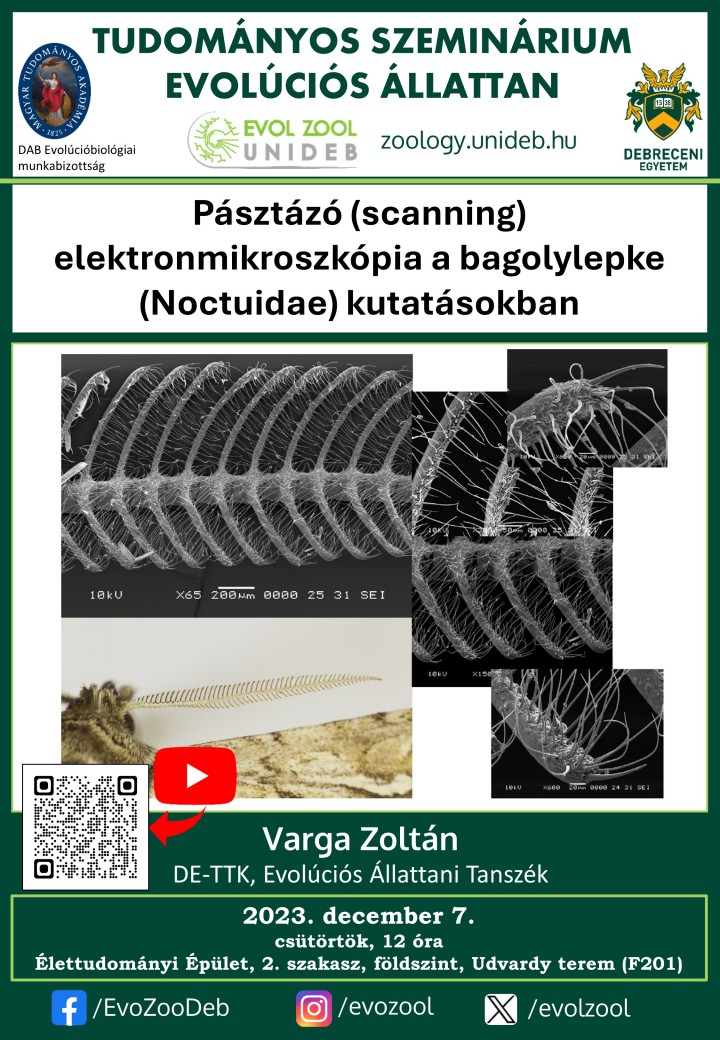 A Debreceni Egyetem Evolúciós Állattani és Humánbiológiai Tanszéke szeretettel meghívja Önöket a szeminárium sorozatának következő előadására, amelyre 2023. december 7-én, 12 órától kerül sor a Debreceni Egyetem Élettudományi Épületének F.201-es termében.
A Debreceni Egyetem Evolúciós Állattani és Humánbiológiai Tanszéke szeretettel meghívja Önöket a szeminárium sorozatának következő előadására, amelyre 2023. december 7-én, 12 órától kerül sor a Debreceni Egyetem Élettudományi Épületének F.201-es termében.
Pásztázó (scanning) elektronmikroszkópia a bagolylepke (Noctuidae) kutatásokban
Előadó:
Dr. Varga Zoltán Sándor
(DE-TTK, Evolúciós Állattani és Humánbiológiai Tanszék)
Az előadás magyar nyelven hangzik el (angol nyelvű diákkal) és YouTube-on élőben követhető lesz ezen a linken: DE-EvolZool - YouTube
ABSTRACT:
Antennae are the primary olfactory organs in insects. They are packed with minute sensory structures (sensilla). These serve as interface between the outer world and the nervous system of the insect. Specialized receptor cells transmit the information on the surroundings to the central nervous system that drive behaviors (e.g. host selection, acceptance for feeding or oviposition. The knowledge on the antennal sensory structures is essential for semiochemical-based control methods. Eight morphological types of sensilla were identified in both sexes: sensilla trichodea, sensilla basiconica, sensilla auricillica, sensilla coeloconica, sensilla chaetica, sensilla styloconica, sensilla squamiformia, and Böhm sensilla in varying numbers and distribution along the length of the antennae. Of these the most widespread are sensilla trichodea and sensilla basiconica. In Ctenoceratoda and related Noctuidae (Hadeninae) species the dorsal vs ventral pectiniform processes of antennae are supplied with strong sensilla chaetica in terminal and termino-lateral position, and with numerous long, apically flagellate sensilla trichoidea. The sensilla trichoidea are arranged in verticilia along the axis of the processes, but irregularly scattered on the stalk of the antenna. Both the stalk and the processes are densely covered with apically acute ivy-leaf-shaped sensilla coeloconica. According to the fine structures of the different types of sensilla, in the genus Ctenoceratoda six species groups, and sister species within each species group have been distinguished.